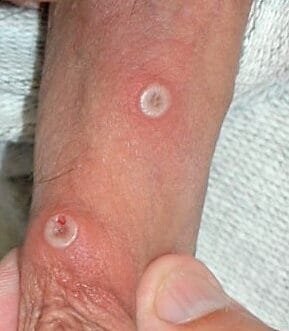
In-Depth Awareness on Mpox (Formerly Monkeypox): What You Need to Know
Introduction: Mpox, formerly known as Monkeypox, has been a topic of increased attention in recent years, especially due to global outbreaks that raised concerns about its transmission. While case numbers have seen a decline, it is important to recognize that Mpox still poses a risk, and widespread awareness can help prevent further spread. This article aims to provide a comprehensive understanding of Mpox—its symptoms, transmission, and how we can all contribute to its prevention.
What Is Mpox (Formerly Monkeypox)?
Mpox is a zoonotic disease, meaning it is primarily transmitted from animals to humans. It is caused by the Mpox virus, a member of the Orthopoxvirus genus in the Poxviridae family, which also includes the smallpox virus. Though its name suggests a connection to monkeys, the virus has also been detected in rodents, and these animals may play a significant role in the disease’s spread. Mpox was first identified in monkeys in 1958 and the first human case was reported in 1970. It was historically found primarily in Central and West Africa, but more recently, outbreaks have occurred outside of these areas, signaling the need for global awareness.
How Does Mpox Spread?
Animal-to-Human Transmission: Mpox can be transmitted through direct contact with infected animals, such as rodents and primates, including through their bodily fluids, bites, or scratches. The virus can also be contracted by consuming improperly cooked meat from infected animals.
Human-to-Human Transmission: The disease can spread from person to person through prolonged close contact, including:
- Direct physical contact: Touching the lesions or bodily fluids of an infected person.
- Respiratory droplets: Mpox can be transmitted when an infected person coughs or sneezes, releasing virus-containing droplets.
- Surface contamination: The virus can also be transmitted indirectly through contaminated clothing, bedding, or other surfaces.
Symptoms of Mpox
The incubation period for Mpox typically ranges from 5 to 21 days. Symptoms may begin as general flu-like signs, and they can develop into more severe manifestations. Common symptoms include:
- Fever and chills
- Swollen lymph nodes (a distinguishing feature compared to similar diseases like smallpox)
- Muscle aches and fatigue
- Headache and back pain
- Rash: The most characteristic symptom, starting as small, flat lesions that progress to raised bumps filled with pus. These lesions are typically found first on the face, spreading to other areas like the hands, feet, and genitals.
In severe cases, the rash can lead to complications, such as secondary bacterial infections, sepsis, or pneumonia, which can be fatal if not treated promptly. Early detection is crucial for preventing these complications.
Why Is Mpox Still a Concern?
Although global case numbers have decreased, Mpox still presents a public health concern for several reasons:
- Global Mobility: With increasing international travel, outbreaks can spread quickly, even to countries that have never reported cases of Mpox.
- Misdiagnosis: The early symptoms of Mpox can resemble other diseases such as chickenpox or flu, making it harder to identify in its early stages.
- Vulnerable Populations: Immunocompromised individuals, children, and pregnant women are at higher risk of developing severe forms of the disease.
Preventing the Spread of Mpox
Here are key preventive measures that can help reduce the risk of infection:
Avoid Contact with Infected Animals:
- Do not handle animals suspected of carrying the virus, especially in areas known to have recent outbreaks.
- Avoid consuming meat from animals that could be infected with Mpox.
Minimize Human-to-Human Transmission:
- Practice good hygiene: Frequent handwashing with soap and water or using alcohol-based hand sanitizers is crucial to prevent the spread of the virus.
- Wear protective equipment: Healthcare workers or anyone caring for an infected person should wear personal protective equipment (PPE), including gloves and masks.
- Social distancing: Avoid close contact with people who are infected, especially if they have visible lesions.
Vaccination:
The smallpox vaccine, which is closely related to Mpox, offers protection against the disease. JYNNEOS, a newer vaccine specifically for Mpox, has been developed and approved for use in at-risk populations. Vaccination can reduce the severity of the disease and prevent transmission in the event of an outbreak.
Quarantine and Isolation:
If you suspect you have been exposed to Mpox or are showing symptoms, it’s important to isolate yourself from others to prevent the spread of the disease. This is especially important for those who are infected but asymptomatic, as they can still spread the virus.
Public Health Measures:
Health authorities can help contain outbreaks through contact tracing, monitoring, and ensuring that proper hygiene and infection control measures are followed. Governments may implement travel restrictions or quarantine protocols in high-risk areas.
The Global Response to Mpox
Mpox outbreaks have been reported in multiple countries outside of Africa, including in Europe, the United States, and parts of Asia. In response, global health organizations, such as the World Health Organization (WHO) and Centers for Disease Control and Prevention (CDC), have ramped up efforts to monitor outbreaks, educate the public, and provide resources for effective response. This includes vaccine distribution in high-risk areas and increasing awareness campaigns to limit the disease’s spread.
What You Can Do to Stay Safe:
- Stay Informed: Regularly check trusted sources like the CDC and WHO for updates on Mpox and potential outbreaks in your area.
- Practice Hygiene: Wash hands frequently and disinfect commonly touched surfaces.
- Consult Healthcare Providers: If you suspect you have symptoms of Mpox or have been exposed, seek medical advice and follow local guidelines for testing and treatment.
Conclusion: Staying Prepared & Informed
Mpox, though less common than other viral diseases, continues to present a significant threat to global health. The combination of proper prevention strategies, increased awareness, and global cooperation can help minimize the spread of this disease. By recognizing the symptoms early, avoiding close contact with infected individuals, and practicing good hygiene, we can all help to keep Mpox at bay.
Share this information with your network to raise awareness about Mpox. Together, we can take the necessary steps to prevent its spread and protect ourselves and our communities.
Dont Hesitate To Contact Us
We’re here to help! If you have any questions, feedback, or need assistance, please feel free to reach out.
Trusted Resources for More Information
Centers for Disease Control and Prevention (CDC) – The CDC offers the most comprehensive and up-to-date information on Mpox, including symptoms, prevention, treatment, and vaccination details. It’s a key resource for understanding public health guidelines and global surveillance on the disease. CDC Mpox Resources
World Health Organization (WHO) – WHO provides global insights into the Mpox outbreak, including epidemiological data, international response efforts, and prevention measures. Their updates are critical for understanding the international context of the disease. WHO Mpox Information
National Emerging Special Pathogens Training and Education Center (NETEC) – NETEC offers specialized resources for healthcare providers, including clinical management protocols and laboratory guidance on Mpox. This is especially useful for healthcare personnel involved in outbreak management. NETEC Mpox Resources


